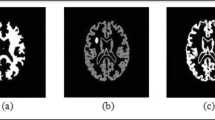Abstract:
Extensive growth in functional brain imaging, perfusion-weighted imaging, diffusion-weighted imaging, brain mapping and brain scanning techniques has led tremendously to the importance of cerebral cortical segmentation both in 2-D and 3-D from volumetric brain magnetic resonance imaging data sets. Besides that, recent growth in deformable brain segmentation techniques in 2-D and 3-D has brought the engineering community, such as the areas of computer vision, image processing, pattern recognition and graphics, closer to the medical community, such as to neuro-surgeons, psychiatrists, oncologists, neuro-radiologists and internists. In Part I of this research (see Suri et al [1]), an attempt was made to review the state-of-the-art in 2-D and 3-D cerebral cortical segmentation techniques from brain magnetic resonance imaging based on two main classes: region- and boundary/surface-based. More than 18 different techniques for segmenting the cerebral cortex from brain slices acquired in orthogonal directions were shown using region-based techniques. We also showed more than ten different techniques to segment the cerebral cortex from magnetic resonance brain volumes using boundary/surface-based techniques. This paper (Part II) focuses on presenting state-of-the-art systems based on the fusion of boundary/surface-based with region-based techniques, also called regional-geometric deformation models, which takes the paradigm of partial differential equations in the level set framework. We also discuss the pros and cons of these various techniques, besides giving the mathematical foundations for each sub-class in the cortical taxonomy. Special emphasis is placed on discussing the advantages, validation, challenges and neuro-science/clinical applications of cortical segmentation.
Similar content being viewed by others
Author information
Authors and Affiliations
Additional information
Received: 25 August 2000, Received in revised form: 28 March 2001, Accepted: 28 March 2001
Rights and permissions
About this article
Cite this article
Suri, J., Singh, S. & Reden, L. Fusion of Region and Boundary/Surface-Based Computer Vision and Pattern Recognition Techniques for 2-D and 3-D MR Cerebral Cortical Segmentation (Part-II): A State-of-the-Art Review. Pattern Anal Appl 5, 77–98 (2002). https://doi.org/10.1007/s100440200006
Published:
Issue Date:
DOI: https://doi.org/10.1007/s100440200006




